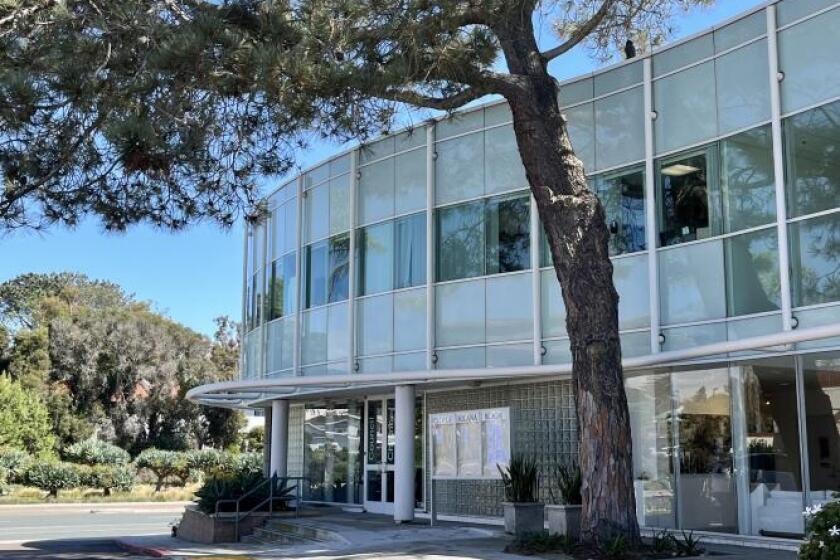Solana Beach plots its 30-year climate plan
Laden with gravitas and optimism, Solana Beach at long last approved its sweeping Climate Action Plan (CAP) to push toward 100 percent renewable energy and cut greenhouse gas emissions in half over the next two decades.
The 146-page document — passed on a 4-1 vote July 12 — lays out a wide-ranging roadmap for policies on transportation, energy acquisition, waste management and a litany of other ways that feed into the city’s contribution to carbon emissions that most scientists say are driving global temperatures perilously upward.
With its July 12 approval, Solana Beach joined a half-dozen other cities in the county that have approved climate plans as required by state legislation from 2006. On the heels of those state mandates, a die-hard group of Solana Beach residents — many of them holding advanced scientific degrees — started clamoring for city action, eventually coming together in what was known as “the Clean and Green team.” That segued last year into the city’s official Climate Action Commission, which hammered out the climate plan over 16 meetings in 14 months, arriving in May at a draft that then drew more than 100 public comments by the time it reached the city council.
That legacy filled the council chambers July 12 as Mayor Mike Nichols read off names from a long list of devotees who had brought the city to its historic vote.
“People need to understand: this is a lot of work, and people have really given their heart and soul for this, so thank you very much,” he said.
Searching for more perspective, he cited the earlier testimony of a resident who quoted Jonas Salk’s famous query: Are we being good ancestors?
“I thought that was a very special way of saying ‘Hey, think about it, in a very broad spectrum, are we doing the right thing for future generations?” Nichols said.
Despite the festive mood, several of the CAP’s most ardent supporters repeated their hope that the city will make the document legally binding. Unlike the climate plans for the cities of San Diego, Carlsbad, Vista and San Marcos, Solana Beach’s CAP is merely aspirational.
The Climate Action Campaign applauded the CAP overall but called on the council to make the plan legally binding. Nicole Capretz, CAC’s executive director, helped shape the CAP as a member of the city’s climate commission.
“If it were legally binding, it would not be subject to the political whims of changing councilmembers and politics,” Capretz wrote in a statement read to the council. “We know cities don’t necessarily like accountability, but this plan is about the biggest crisis facing humanity. If cities don’t want accountability for climate action, what public policy issue will they take accountability for?”
Councilman Dave Zito pointed to troubles in cities that did so.
“The trend seems to be you create something legally enforceable, you’re going to get sued,” he said. “I think it’s a good point as we go through this to think about: Do we want to spend that money defending lawsuits or do we want to spend that money on implementing policies?”
Legally binding would require an exhaustive analysis and certification under the California Environmental Quality Act. Mayor Mike Nichols said the city will revisit the idea at a later date.
Also still to come is a study on the costs and complications that the CAP will create. That analysis won’t come until the city crafts the CAP’s implementation plan at the end of this year.
“So I’m supposed to vote for something that I don’t know how much it’s going to cost? I’m not comfortable doing that,” said Deputy Mayor Ginger Marshall, who cast the lone dissenting vote.
Marshall pointed to a request from the San Diego County Taxpayers Association asking the city to hold off until the group completes a feasibility study later this summer.
“I’m all for clean energy. I have solar panels on my house. I drive a hybrid vehicle. But I’m also fiscally responsible to the taxpayers of this town, and the costs have not been outlined,” Marshall said. “I do remember Dr. [Mary] Yang [of the city’s climate commission] saying in a separate meeting that there will be pain. Everything is a cost-benefit analysis.”
Councilwoman Judy Hegenauer, who has for years made climate change and energy alternatives her top issues, countered that the alternative is far worse.
“The scenarios that come from not doing anything are horrendous. Once we figure out the cost of not doing anything, I think the cost of doing something will be very much justified,” she said.
Zito offered up the example of the federal shoreline replenishment project that is heading toward a price tag beyond $50 million.
“That’s just one small element of the cost of climate change, and we’re already trying to encourage the federal government to spend up to $150 million, if you include Encinitas, on that whole project,” he said. “So I’m not quite as worried about the cost-benefit analysis because at this point it’s becoming somewhat intuitively obvious.”
Read the CAP at www.ci.solana-beach.ca.us.
Get the Del Mar Times in your inbox
Top stories from Carmel Valley, Del Mar and Solana Beach every Friday for free.
You may occasionally receive promotional content from the Del Mar Times.




